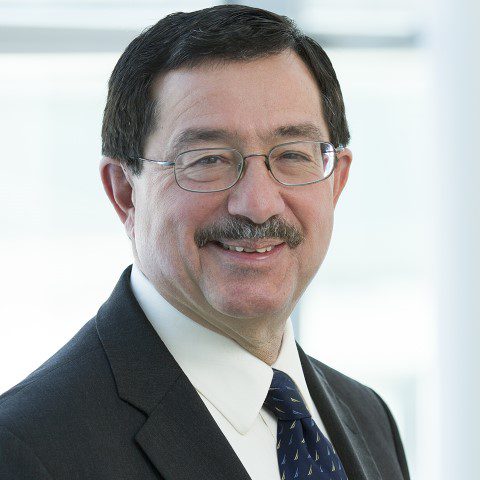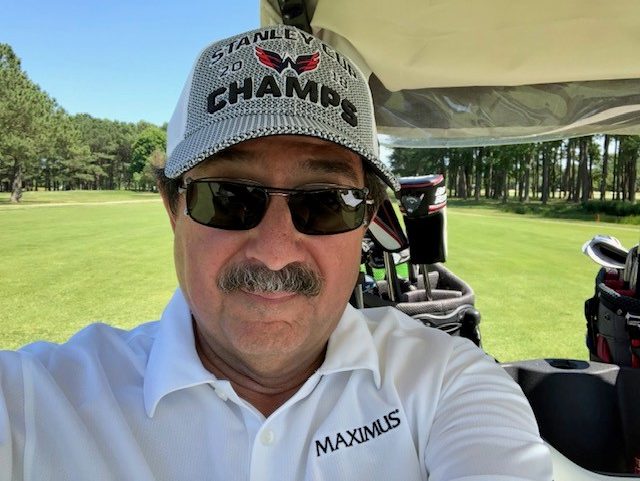
After more than 30 years in government contracting and operations work, there’s one thing Tom Romeo knows for sure: He loves to help solve big, complex problems — and those problems don’t get bigger and more complex than the federal government.
“I really like the solution side of my work. Technology is only one consideration and my objective is to approach the solution in a holistic fashion,” Romeo, who serves as president and general manager for the U.S. federal services segment of MAXIMUS, told WashingtonExec.
That’s what drives him in GovCon — solving problems. And at MAXIMUS, it’s the combination of offering business process management and technology to support that and solve business problems that excite him.
But prior to MAXIMUS, Romeo saw technological evolution and transformational change through a more than two-decade-long career at IBM, and a professional life that began with bookkeeping.
From Upstate New York to the Nation’s Capital
Romeo grew up with seven siblings in a little town on the Canadian border called Massena, New York. His father, who worked at an aluminum factory, wanted one thing and one thing only when it was time for Romeo to go to college.
“My dad’s only question when I went to college was: ‘Can you get a job in that?’” Romeo joked. He knew he could get a job in accounting, and “that’s pretty much why I picked it,” he said.
Romeo earned his Bachelor of Science in accounting from the State University of New York in 1977, where he also got his associate degree in applied science business administration.
He worked in Schenectady, New York, as a bookkeeper for a liquor distributor shortly before he and his wife decided they wanted to move to a big city. Plus, Romeo quickly learned while studying accounting that he didn’t love finance.
So, he and his wife moved to Washington, D.C. Romeo worked as an auditor for an insurance company for five years while earning his master’s degree in management information systems from the University of Maryland, College Park, which he completed in 1984. He chose this course of study because he wanted to work for IBM.
“I had a passion, and IBM was the place that I really thought that I could develop a good career path,” Romeo said. “That was early on. The master’s was called management information systems. It wasn’t a pure computer science degree, but I felt like that would be a bridge to get me into IBM, and it did.”
IBM hired Romeo straight out of graduate school, and he spent the next 25 years in various roles within the company.
“It was fascinating,” Romeo said. “When I started there, it was a club mentality. Once you were in, they really kind of ingrained in you that you were the best of the best and you made it into the club. The turnover rate there was less than 1% a year. No one ever left IBM.”
And even as IBM experienced financial and transformational changes in Romeo’s 25 years there, he was never offered an early out.
“I felt like that was representative that I was in the right place doing the right job at the right time,” he said.
Romeo was with IBM from the introduction of the personal computer — when the company was selling them directly to consumers — through the move from a mainframe to the server-based environment and from hardware to software, then software-as-a-service.
Romeo started at IBM as a systems engineer, provided as a free service to customers who bought hardware. When IBM shifted to IBM Global Services, systems engineers became more like consultants, and paid as such.
That was a big shift in the industry at the time, and the first time in Romeo’s career he asked someone to pay for him, instead of the equipment.
“That was a memorable event in my career,” he said.
He also loved the range of opportunities and career paths available within IBM at the time. Romeo was a systems engineer for six years, worked overseas in Brussels on a data modeling project with insurance companies, brought that data model back to the U.S. to lead and train a team of 90 consultants selling the model to insurance companies, served as a business area manager, ran customer relationship management internationally for banking and insurance for IBM, and eventually, moved to federal, to run a large portfolio in the federal business unit.
In all, he had worked in the company’s federal government, education, health care, NASA, social services, financial services, and global business services portfolios. Romeo left IBM in 2009 as a vice president of federal services.
“I felt like I had kind of capped out at IBM. I had given what I could give and we were in a great position,” he said.
That year, Accenture offered Romeo a position leading some of its health care work. He went to Canada for a year to run Accenture’s Canadian health care business.
“That part actually was very attractive to me because I got to see the reality versus the myth of what the Canadian health care business was like,” Romeo said. “Canada was a very different environment. It was a great year.”
Romeo was with Accenture until July 2011, and served as a senior executive for Accenture’s health and human services business.
The opportunity to join MAXIMUS that year came via CEO Bruce Caswell, whom Romeo had worked with at IBM.
“They asked me if I would take a lunch with him,” Romeo said. And because the situation at Accenture wasn’t playing out the way he expected when he returned from Canada, he accepted.
“Bruce said it was the best lunch he ever had. I think it was by far the best lunch I’ve ever had. He offered me the position and it’s been a great opportunity and great to work with MAXIMUS,” said Romeo, who’s been with the company since August 2011.
But he didn’t get there alone, and attributes the opportunities he’s had and the management style he’s adopted to phenomenal leaders he’s had along the way.
“Mostly, I’ve been given opportunities to be creative and innovative with the support that I needed throughout my career,” Romeo said. “And that’s the kind of leader I want to be for my team, is that you hire people because you have faith that they can do the work. You don’t do the work for them.”
Solving Big Problems at MAXIMUS
Because Romeo is drawn to and driven by solving vexing challenges, he appreciates the unique opportunities to do so within MAXIMUS
“We’re very good at the people management side of it and applying technology to get more efficiency,” he said. Where other companies in industry wouldn’t directly hire large numbers of employees for contact center or administrative work, for example, MAXIMUS does. It’s in its business model.
“One of the first wins we had when we came here was right after the Affordable Care Act passed and we needed to ramp up 3,000 employees to staff a contact center in less than two months,” Romeo said, “and we did it. I don’t think there’s many, if any other companies in the world, that could do what we did.”
And the way Romeo and his team solve big problems and approach innovation with customers is by breaking down the problem into smaller problems.
“We see a lot more tech challenges now. Before, it was like we’re going to rewrite the whole legacy system and millions of lines of code, and it didn’t work,” he said. “There were failures that cost hundreds of millions of dollars.”
Now, the approach is to leave most of the code alone, and take a piece of it that’s more customer-facing and modernize it, Romeo said.
“That shows us that you can break off a piece and rapidly develop using agile techniques or that type of approach,” he added.
MAXIMUS has close relationships with its customers, which allows it to show them how technology works in pilot mode, so customers can understand the true value of a solution and slowly introduce it into a project.
The current challenge he and MAXIMUS are focused on is running the contact center support for the 2020 census. The company is in the midst of standing up 8,000 call agents for 12 weeks of call answering in eight Federal Risk and Authorization Management Program-authorized contact centers.
“That’s a big focus for the next eight months, is to make sure that we service that contract appropriately,” Romeo said.
Serving Citizens, Mission and Culture
Outside of work, Romeo values people and culture. He and his wife have three children and two granddaughters, and he loves spending anytime he can get with family — near home or abroad.
“We as a family travel a lot in my spare time. I love that,” Romeo said.

But that love for people and culture bleeds into work, too, especially as it relates to mission.
Solving large, complex problems and helping make federal programs and services more efficient is exciting, but it’s the impact of that work and mission that motivates Romeo every day.
“It’s the direct responsibility to help the citizen get what they are entitled to,” he said.
From servicing Medicare enrollment processes and appeals to providing student loan counseling and helping school libraries get funding for the internet, it’s truly impacting a person’s life that Romeo values being a part of.
“It is just extremely rewarding,” Romeo said. “I loved working at IBM, but I always felt like we were providing the technology, which wasn’t the direct impact to the citizen. At MAXIMUS, we’re the front line.”
And he’s proud and honored to be on that frontline. The federal services segment at MAXIMUS has boomed from $80 million to $1.4 billion in nine years under his leadership – a growth Romeo couldn’t have imagined being a part of when he first joined.
“What I owe any company that I work for is to put in an organization that can sustain whether I’m here or not. That means bringing the right people in and structuring the organization to do its work,” Romeo added. While he’s proud of his career and the teams he’s built, it’d be most rewarding to see it thrive once he’s gone.
And that includes the culture — Romeo hopes to have a long-lasting impact on the internal culture at MAXIMUS.
“Because of the population we serve, the internal culture reflects that kind of attitude that we work together, that there’s a kindness in the company, and I want to make sure that whether it’s me in that seat or someone after me, that that culture continues,” Romeo said.

